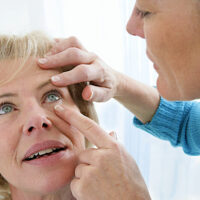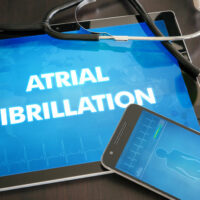15 Hidden Apple Watch Hacks Users Must Know

The Apple Watch Series 9 was launched on September 22, 2023, following the release of the Apple Watch Series 8. This new addition to the Apple Watch series runs on watch OS 10 and boasts a brighter display, new watch faces, and new cycling and hiking features, among other upgrades. So, for those seeking ways to navigate the device, here are some top Apple Watch hacks to help one make the most of this timepiece.
Get notified of high noise levels
The Apple Watch can identify and alert when in noisy environments that could affect one’s hearing. The desired noise level limits can be set through the Noise app, while the adjustments for the notifications can be done directly through the watch.
Use it as a remote for Apple TV
Apple owners can use their watch as a remote control for Apple TV when both are connected to the same Wi-Fi network. To use this feature, open the Remote app on the Apple Watch and tap or add the Apple TV. Also, select Apple Watch in the Apple TV settings, then enter the passcode displayed on the Apple Watch.
Cover watch face to mute calls
For this feature to work, simply turn on Cover to mute in the Sound and Haptics section of the Apple Watch app for owners of Apple Watch Series 8 or 9.
Enable low-power mode
Enabling the low-power mode is a great way to maximize the Apple Watch’s battery life. For this, one must press the side button on the Apple Watch Series 8 or Apple Watch Series 9 to open the Control Centre. Next, tap the battery percentage button and turn on Low Power Mode.
Set multiple timers on the Apple Watch
The Apple Watch has a useful feature that allows one to set multiple timers for various tasks, such as cooking or managing a child’s screen time. To set multiple timers, open the Timers app on the Apple Watch, start a timer, and assign a label. Then, return to the Timers screen and start another timer. Alternatively, one can also use the Siri voice command to set multiple timers.
Enable crash detection
The car crash detection is a new feature available in Apple Watch Series 8 and Apple Watch Series 9. If crash detection is enabled on the watch, it will automatically notify the emergency services and share the GPS coordinates. To enable the setting, one must launch the Watch App on the iPhone, tap the My Watch Tab, select Emergency SOS, and enable Call After Severe Crash.
Use the water lock
Apple Watch Series 8 and Apple Watch Series 9 are water-resistant and can be worn even when showering or swimming. The water lock feature turns off the watch’s screen so that water drops do not interact with the display, preventing accidental activation of a function. Go to the Control Center on the Apple watch and tap the water lock icon.
Share an image
Apple owners can share photos or images from their watch without using the iPhone. Open the Photos app on the Apple watch and select the photo or image. Tap the share icon on the bottom right of the photo and send it to anyone via email or messages.
View activity rings
In the previous Apple watches, Apple owners had to exit the workout app to check the activity rings. But now, in the Apple Watch Series 8 and Apple Watch Series 9, Apple owners can glance at activity rings in the workout display. Scrolling up with the Digital Crown will reveal the activity rings without any workout interruption.
Receive e-mail notifications when not connected to the iPhone
Apple owners can continue receiving email alerts even when away from their iPhones. To set up this feature- Go to the Watch App on the iPhone, select My Watch, tap Mail, and turn on email notifications under When not connected to iPhone.
Follow and unfollow podcasts from Apple Watch
Apple owners can now follow and unfollow podcasts from the Apple Watch. Go to the Podcast app on the Apple Watch, on the Listen Now screen, tap one might like, tap a show, and select Follow. For unfollowing a podcast, tap Library, tap the show, and then select Unfollow.
Backtrack to retrace steps
The Backtrack feature helps trace the steps in case an Apple owner loses their way, especially useful in remote places. On the Compass app, select the Backtrack icon and tap Start to begin recording.
Edit reminders
Unlike the previous Apple watch versions, the Apple Watch Series 8 lets Apple users edit reminders right from the watch. It also allows adding reminder details like date, time, location, and notes.
Create calendar events
Users can now add calendar events directly from their watch. One needs to launch the Calendar app on the Watch, tap the three dots icon, select a new event, add details, and select add.
Keeps apps open for longer
By default, the Apple Watch shows the watch face or clock after two minutes when it is idle, exiting the standby app. To change this, go to general settings, tap Return to Clock, change to After one hour, or scroll down and customize for each app.





